
BACK TO THE FUTURE
New tropical fruit crops of 1887 - a blueprint for today and a sweepstakes
This paper by Dr. Knight appeared in the Proceedings of the Florida State Horticultural Society, 1987 and is based on the discovery of a copy of Reasoner Brother's 1887 nursery catalog and Dr. Knight's own wide-ranging and unique perspective. The list of plants will surprise people who thought many of the plants listed were of more recent introduction. The illustrations are from the 1887 Reasoners'catalog.
Thirty-six years ago, when my 89-year-old grandfather closed the house he had lived in for over 60 years, a fascinating piece of fall-out came my way. This was the first catalog and price list of the Royal Palm Nurseries, for the season of 1887-88, sent out by the Reasoner Brothers from Manatee, Florida). This document, issued for the same year the Florida State Horticultural Society was organized, gives a picture of what horticulture was like here at that time. We might be forgiven after a quick leaf-through for thinking that things really have not changed much. With 20-20 hindsight of a 100 years, we may smile at the idea of cultivating some of the crops our young, optimistic grandparents and great-grandparents then expected to grow.
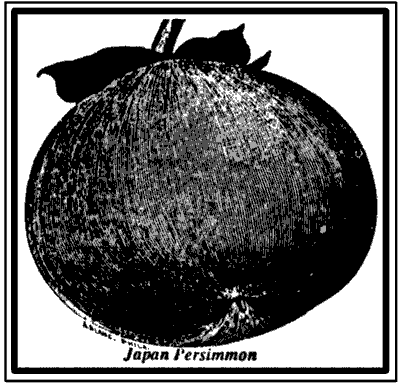
On the other hand, it is almost uncanny how many of today's old standbys or bright new hopes were already here.
Few horticulturist living in southern Florida in 1887 had been here long enough to know what realistically could be expected to succeed. The science of ecology had not yet appeared on the scene. Schimper's pioneering book Plant-Geography upon a Physiological Basis in its first German-language edition was still 16 years down the road. Nonetheless, a good bit of hard-won information had already accumulated. One of my grandfather's closest neighbors was Robert D. Hoyt, proprietor of Exotic Nurseries, located at the present site of the Kapok Tree Restaurant in Clearwater. Mr Hoyt, of course, planted the old Bombax ceiba tree still growing there. More to the point, he was an organizing member of the Florida State Horticultural Society, and worked to promote fruit culture.
Reasoner's 1887-88 catalog was prepared by Pliny Ford Reasoner, a remarkable young man fated to die tragically in September, 1888 at the age of 25. He also prepared the U.S. Department of Agriculture division of Pomology Bulletin No.1, which appeared in 1888 and duplicates much of the catalog's information. His younger brother, Egbert, survived another 40 years and the nursery yet survives in Manatee County.
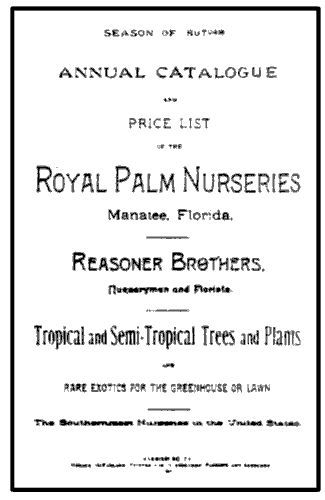
During his short life, Pliny served the cause of Florida and tropical horticulture enormously. He corresponded extensively with plant people around the world, introducing hundreds of ornamental and fruit plants, and making a 4-week plant exploration of Cuba during the mango season. Recognized for his ability, he was horticultural commissioner in charge of the Sub-tropical Exposition in Jacksonville in 1887-88. Also, he was one of the three Florida commissioners at the Cotton States Centennial Exposition in Atlanta in 1887. So the catalog he published was not his only accomplishment for that year. It remains a valuable reference, honestly prepared and scholarly, yet well-laced with the poetry that was apparently felt to be necessary in Victorian gardening literature. (This may have been added by people at the firm of J. Horace McFarland in Harrisburg, PA who printed the document.) A careful perusal of this catalog gives an accurate picture of what was already on the scene and in the race for the sweepstakes, and what was still over the horizon.
Tropical fruits were sold as unnamed seedlings except for bananas, mangos, pineapples and guavas. Of avocados, only West Indian seedlings appeared. The clones that were named, budded and offered for sale by George Cellon in Miami 12 years later, were of course not yet available. Furthermore, the Mexican and Guatemalan race cultivars that Reasoners and others sold in later years had not yet been brought to Florida. The Guatemalan-West lndian hybrid cultivars that were to originate and to become the backbone of the industry in Florida and important in other countries, were not yet in existence.
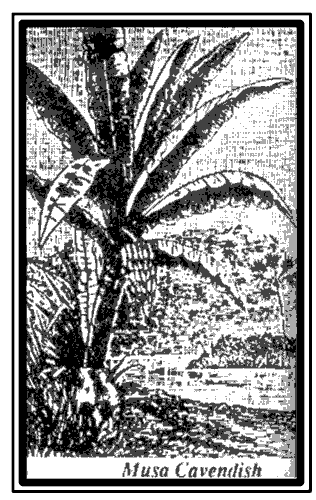
Five banana cultivars were offered in the Reasoner catalog, and one plantain. The seven seed-propagated, named mangos offered appear to be polyembryonic types brought from the West Indies by the Reasoners or earlier plant collectors. The three Indian cultivars described were not priced and presumably were not available in sufficient quantity to be offered at a set charge. 'Mulgoba', the first improved, grafted Indian cultivar established in Florida was introduced two years later by the U.S. Department of Agriculture. The 'Mulgoba' was the seed parent of the 'Haden' and an important stimulus to the early development of grafted mango orchards in Florida. The pineapple cultivars sold by Reasoners in 1887 are still recognized. 'Cayenne' was not offered, perhaps because it was not widely grown in Florida.
The experimental side of Florida pomology in 1887 is emphasized by the listing of some plants from hot tropics that have never become established, including the souari nut (Caryocar nuciferum) and cupuassu (Theobroma grandiflora). Also, two solanaceous plants from cool tropical climates proved to be ill-adapted here. These are the pepino (Solanum muricatum) and the tree tomato (Cyphomandra betacea). Another important tropical fruit that failed for similar reasons is the cherimoya (Annona cherimola), but this species contributed valuable genes when combined with the sugar apple (A. squamosa) to form the hybrid Atemoya, a valuable crop today that was not available in 1887. The purple passion fruit (Passiflora edulis) was offered, but not the yellow form.
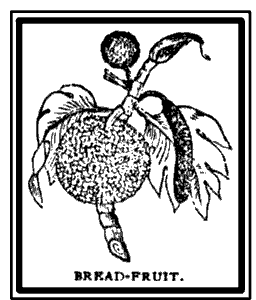
Among other tropical fruits listed were several citrus relatives: bael fruit, elephant apple, two species of Glycosmis, and the limeberry.
Apart from tropical fruits, Reasoners sold citrus fruits and a number of others they termed as hardier semi-tropical fruits. The citrus picture given by this catalog shows an industry in flux. The 69 cultivars of orange offered include 'Homosass', 'Jaffa', 'Pineapple', 'Washington Navel', 'Parson Brown' and 'Valencia Late', but not 'Hamlin' and the subsequent round orange introductions that have since assumed some degree of importance. Ten mandarins available include 'Cleopatra', 'Dancy', 'King' and 'Satsuma'. No tangelos, 'Temple', 'Murcot', or any other mandarin were offered as these did not yet exist.
The most obvious difference between the 1887 citrus picture and that of today was the grapefruit's status as a new fruit, not widely grown, but enthusiastically described. Neither 'Duncan' nor any seedless or red-fleshed cultivars were yet listed, although what became known as the 'Duncan' was already growing on the old Odet Philippe holding, now Safety Harbor, awaiting its time to be propagated by A.L. Duncan about five years later. Also, what was to later named 'Marsh' was being increased in Polk County).
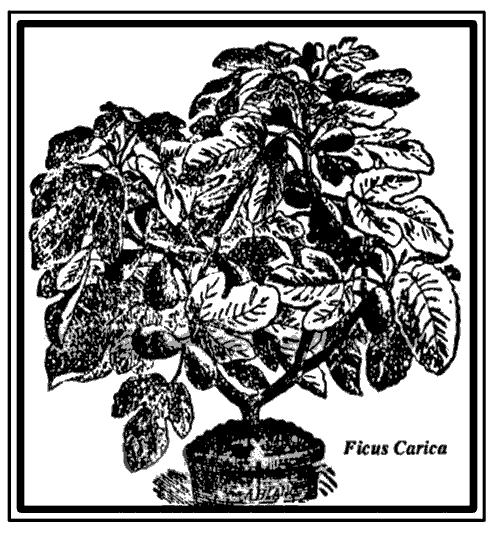
Lemons were popular in 1887 with large stocks being offered of 'Genoa', 'Villafranca', 'Suacco', 'Communis' and 'French's Seedling'. Named limes included 'Key' ('Florida'), 'Tahiti' and nine no longer grown here.
Of the hardier semi-tropical fruits other than citrus, some are now of interest as dual-purpose ornamental and fruiting plants, notably cattley guava, fig, loquat, and Surinam cherry. Others that have been less successful are carob, Chinese jujube, Indian fig cactus and pomegranate.
Another section of thc catalog offers fruits from warm-temperate conditions. Listed are six Japanese persimmons including 'Hachiya' and 'Hyakume', also several Prunus species and 'Keiffer' and 'LeConte' pears.
Grapes offered for trial planting include several muscadines still being grown plus common labrusca cultivars such as 'Concord', also a number of hybrid and vinifera types no longer attempted in Florida, as it is now known they cannot survive infection with Pierce's disease.
Four peaches, all recommended especially for Florida, were "Peento', 'Honey', 'Bidwell's Early' and 'Bidwell's Late'. These were not the best peaches at the time but were ones known to perform best in Florida.
Despite the poetic language, this was an honest, state-of-the-art catalog, not a dream book. The high quality, low-chill peaches developed by the Institute of Food and Agricultural Sciences (IFAS) scientists since World War II still carry important genes that came from the South China peaches of 1887. The same kind of breeding effort applied to grapes has totally changed today's varietal picture of this crop. You cannot find blueberries in the pages of the 1887 catalog, as cultivated blueberries did not exist at that time, in Florida or anywhere in North America. As with peaches and grapes, IFAS is continuing to make progress with highbush and rabbiteye blueberry breeding begun about 35 years ago. Additional evidence that Reasoners' first catalog was not based on fantasy or wishful thinking appears in information compiled by Egbert Reasoner and Robert D. Hoyt for presentation at the joint meeting of our group and the American Pomological Society held at Ocala in 1889. This supplies information on what was grown and sold in the public markets at that time. We may look at what was already on the scene in 1887, and what has become available since, and try to determine why any one specific crop has fared as it did.
Why did limes, avocados and mangos "take off" as commercial enterprises in the first half of this century, shortly before or after World War II, and why have other crops, such as Iychee, carambola and passion fruit not yet attained what we may hope is their real potential?
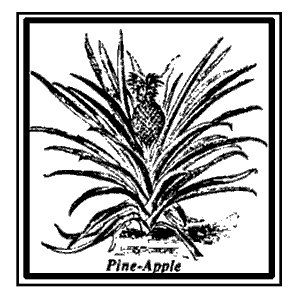
Why did the pineapple, the most important tropical fruit of 1887, continue to grow in importance for another 20 years and then drop to a distinctly minor status? (With hindsight we now know that answer fairly well: a combination of disease here and competition from elsewhere did the pineapple in.)
Much of the answer to the first question can be found by examining economic factors such as competition from other regions and crops, ease and cost of production here, and changes in consumer demand.
A couple of important instruments of change have been the introduction of improved cultivars or the new germplasm that could give rise to these improved plants. Mango and avocado, in particular, have benefited from this effort, and the development of improved technology such as overhead irrigation and improved fungicides that have made it possible to produce fruit of high quality in an area where weather and commonly-prevailing disease organisms would otherwise make this difficult.
With our gift of hindsight, we note that the 'Tahiti' lime was already available in 1887. Nobody who knows south Florida horticulture would claim that it is easy to produce marketable 'Tahiti' limes in sufficient quantities at the time at the time of year it is most needed. Nor is it the easiest fruit to handle after it is picked. However, from the viewpoint of most customers this cultivar comes close to ideal lime if it has been well-grown and carefully handled before marketing. This, I believe, explains its success in the sweepstakes and why it will remain popular in the foreseeable future.
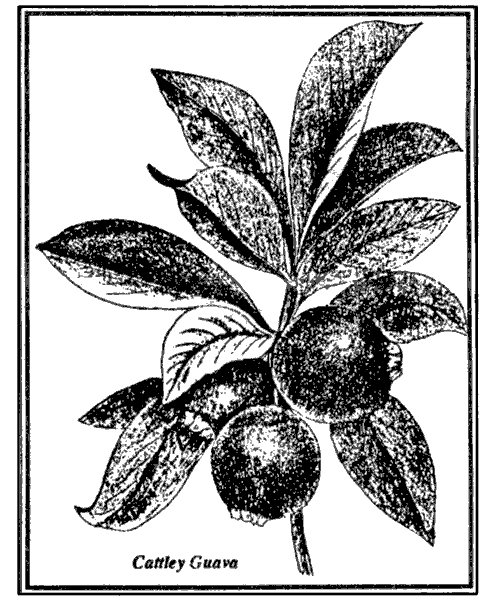
In contrast, the first carambolas to fruit in Florida were seedlings of poor quality. One example that has been in the USDA collection at Chapman Field since 1933 (M-9304, P.I. 221126) is among the sourest tasting clones available. Not until Dr. Herbert Wolfe brought seed from improved stock from Hawaii to the University of Florida's Homestead Station (now the Tropical Research and Education Center) in 1935, stock that produced the cultivar named 'Golden Star' 30 years later, did the carambola picture change markedly.
Ecology can never be ignored, and as we continue trying to understand and work with it, some of the crops of the 1887 blueprint are still with us today and we are still trying to achieve economic success with them. Some of these fruits in their own way have just as much customer appeal as the 'Tahiti' lime. The lychee, as one example, was not sold by Reasoners in 1887 even though it had been introduced into Florida several years earlier. The clone that became known here as 'Brewster' was introduced in 1903. This fruit did eventually have a flurry of increased popularity between the end of World War II and the disastrous winter of 1958. Optimistic young people are still planting lychees and selling the fruit when production is adequate to permit this. A lychee boom could be expected if we had a new cultivar (or a new series of cultivars ripening successively over a long season) that combined the fruit quality of 'Brewster' and the dependable productivity of 'Mauritius'.
Passion fruit is another example of a fruit with large market potential if we could only get it to produce here in adequate quantities. It has problems with pollination, soil-borne diseases and nematodes but research attention can and will make a positive difference for this crop.
It may be hard to determine what element of the blueprint will be realized next, but watching and taking part in the effort promises to continue to be exciting and rewarding. The Spaniards have an old proverb, a refrain, that goes like this: "Después de España cielo, y entonces un agujercito para verlo" which loosely translated, "After Spain, Heaven, and even then a little hole through which we can see Spain." Looking at Spain is not a vital concern of mine, but I can understand those for whom it is. Thus I can say this about Florida and horticulture in Florida, in all sincerity: there is no place in the world I would rather be, right now, waiting to see what is going to happen next, than here!
This is an exciting time to be alive and working. If you have any dull, tiresome facts to the contrary, please don't confuse me with them.
DATE: January 1989
* * * * * * * * * * * * *
